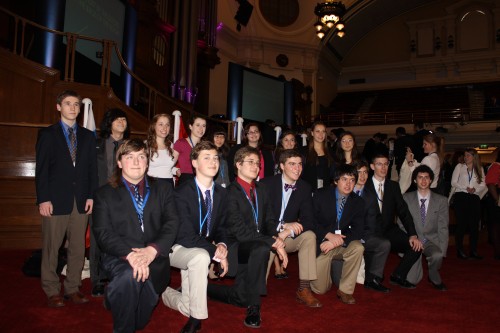This year at the 15th Session of London International Model United Nations (2014), the Best Medium Sized Delegation Award went not to a competitive European collegiate team, but to an American high school team; Manlius Pebble Hill Model United Nations (MPHMUN). Best Delegate spoke to Dr. Jeffery A. Mangram of MPHMUN about their recipe for success.
How does the MPHMUN team work towards its success?
Manlius Pebble Hill Model United Nations (MPNMUN) program/team is a debate organization which centers its identity on the premise that five key core values must be adhered to all times if our short-term and long term goals are to be attained. Those five core values are: (1.) Character; (2.) Caring; (3.) Chemistry; (4.) Commitment; and (5.) Competence. Because Model United Nations is designed to simulate the United Nations, we use debate preparation and Model United Nations conferences to assess the students’ abilities to incorporate these values into their everyday existence.
We travel around the US and the world in order to compete against the best teams. Indeed, MPHMUN has traveled to some of the top US colleges to attend high school conferences around issues of international relations. For example, we have gone to Harvard University, University of California at Berkeley, and Georgetown University. In addition, we travel the world to London, Dublin, Kenya, and Geneva, Switzerland to attend Model United Nations conferences. A secondary but crucial reason for taking these trips is to expose the students to different perspectives and world views.
The students learn about and argue over a range of issues from world health issues to international economics, from nuclear proliferation issues to the weaponization of space, from land disputes to the trafficking of women and children. All of these issues are current and pressing, and I motivate the students to look at these issues from a humanist lens. That is, students must understand that human beings are involved in all of these issues at some level, and are both benefiting and being oppressed because of decisions that other human beings make.
How does the selection and training programme work?
Before every conference, I assess which students have performed well in previous conferences, and make decisions on who should be given an opportunity to compete for the right to represent MPHMUN at the next conference. Every student has to earn the right to go to every conference. This is how we avoid complacency. Once the student has been chose and the county and committee assigned, they begin researching and writing their position papers. Next, the students meet and read and edit each other’s position papers, illuminating those areas that are subpar or poorly crafted. During that editing session, the student orally present their position papers for 5 minutes, and then must take questions from other team members for 5 minutes, culminating with two minutes of feedback on substance and style. We repeat this cycle innumerable times until the student has reached mastery of the topic.
Where does the team compete?
We annually travel to Washington D.C. for the NAIMUN Conference, to Syracuse University for the CNYMUN conference, though not in the US, we annually travel to Montreal, Quebec to attend the SSUNS conference. We have travelled to Berkeley, California to the Cal-Berkeley Conference as well as Cambridge, Massachusetts for the Harvard Conference. (We attend other local conferences which are less prestigious than these, including Colgate University and St. John Fisher College).
We have attended the conferences in London (LIMUN and the Royal Russell Academy Conference and the St. Andrew’s College conference in Dublin, Ireland. We have travelled to St. Petersburg, Russia to attend their conference, and we have travelled to Hague, Netherlands to attend that conference.
What made the team decide to compete at LIMUN?
First, we wanted to find the best competition in Europe to compete against since we had a veteran group of seniors who had competed and won at other prestigious conferences in the US and Canada (SSUNS and NAIMUN). Our goal is to be one of the best MUN teams in North America. Thus, ironically, we wanted to test our abilities against Europeans to see where we stand as a program. Second, we wanted to spend some time in Europe, particularly London, to see the sights and experience different perspectives.
How do conferences differ between Europe and the US?
The students thought that LIMUN had the best prepared delegates that they have ever faced. Furthermore, the students believed the chairs ran the committees with great care and integrity. Interestingly, however, the students thought procedures were quite similar to the US conferences.
How does a high school team adapt to and do well at collegiate level conferences?
We spent a fair amount of time discussing the age factor, which often intimidates students. I reminded my seniors that they were applying to some of the best universities in the US and that meant something as far as their intellectual abilities are concerned. Still, we had a freshman win an outstanding delegate award at this conference, which shows the intellectual capacities of our students and their extraordinary preparation.
How did LIMUN differ as a European conference for a US team?
The students constantly mentioned that they were in committees with people from all over Europe and, indeed, the world, and that there were so many perspectives to contend with inside and outside the conference. Moreover, the students spoke about how knowledgeable and serious the delegates were about the topics, about how much energy the committee members spent massaging the language to make their points clearly.
The MPHMUN team should be particularly proud of their successes, and we look forward to seeing these young delegates competing on the collegiate circuit with their college teams in the near future.



